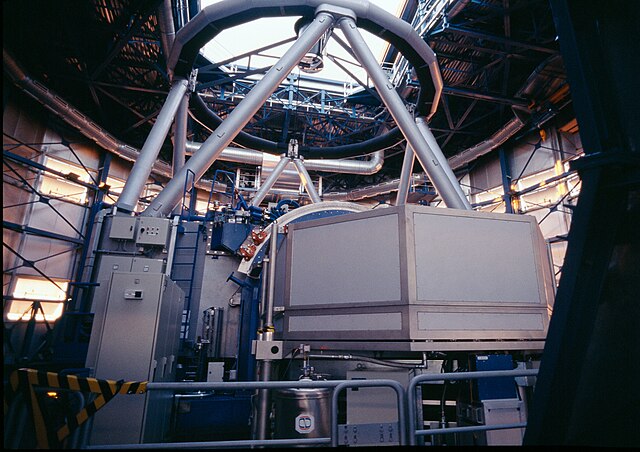Fluorescence spectroscopy
Fluorescence spectroscopy is a type of electromagnetic spectroscopy that analyzes fluorescence from a sample. It involves using a beam of light, usually ultraviolet light, that excites the electrons in molecules of certain compounds and causes them to emit light; typically, but not necessarily, visible light. A complementary technique is absorption spectroscopy. In the special case of single molecule fluorescence spectroscopy, intensity fluctuations from the emitted light are measured from either single fluorophores, or pairs of fluorophores.
Atomic fluorescence spectroscopy analyzer for determination of mercury
Spectroscopy is the field of study that measures and interprets electromagnetic spectra. In narrower contexts, spectroscopy is the precise study of color as generalized from visible light to all bands of the electromagnetic spectrum.
An example of spectroscopy: a prism analyses white light by dispersing it into its component colors.
A huge diffraction grating at the heart of the ultra-precise ESPRESSO spectrograph.
UVES is a high-resolution spectrograph on the Very Large Telescope.
Atomic spectra comparison table, from "Spektroskopische Methoden der analytischen Chemie" (1922).





